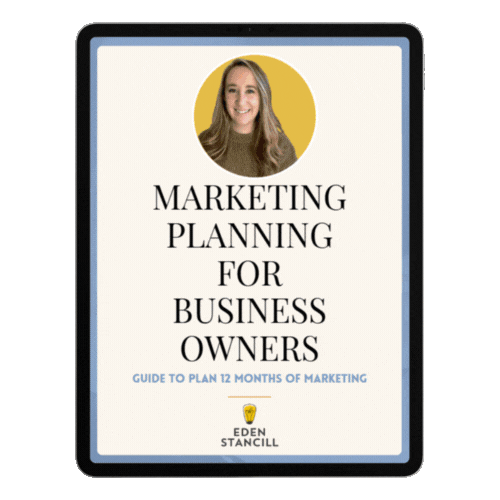Segment Your Email List + Boost Your Sales
- Eden Stancill
- Aug 2, 2019
- 3 min read
Updated: Apr 30

Let’s talk email lists—the golden ticket of small business marketing.
I know, I know…I talk about email marketing a lot. But that’s because it works.
Unlike some marketing tactics that might work depending on your niche or how you're holding your mouth when you hit post (kidding… kinda), email marketing is a rare gem that delivers across the board, with no algorithm to battle.
And just when you think email marketing couldn’t get any better—it absolutely can. By segmenting your email list, you can break your list into focused groups, speak directly to what different subscribers want, AND boost your sales in the process.
I'd call that a big fat win-win.
And before we dig into the magic of segmenting your email list (seriously, it will change everything for you), let’s do a quick recap of why email marketing is always the first move I make with new clients:
Direct line of communication between you and your customers
FREE (or usually really inexpensive) to set up, depending on the provider you choose
EASY to automate – schedule emails days, weeks or months in advance
Super effective at building relationships with customers and in turn, driving sales (when done correctly)
I talk about the first three benefits of email marketing all the time—but this post is about the fourth one: using your list to build real relationships and drive actual sales.
Here’s what I hear all the time: “I know I need an email list, but what do I actually send to people?”
The answer is surprisingly simple—and very important.
✨ If you want an engaged email list that drives sales, you need to provide value. ✨
But here’s the catch: what’s valuable to one person might be totally irrelevant to someone else. That’s where segmenting your email list steps in and turns emails into $$$.
Let me show you what I mean.
For some reason, my go-to example is always a landscaping company…we're rolling with it. 🌳
So let’s say I own a landscaping business and I’ve got a blog post called “Container Gardening: For People With a Green Thumb but Little-to-No Green Space.” It’s tailored to folks who maybe live in apartments or townhomes—people who don’t have a big yard to work with, but still want to grow things.
In that blog post, I offer a freebie: a downloadable guide called “Best Container Plants for Small Spaces.” Someone reads the post, loves it, signs up for the freebie, and now they’re on my email list. Awesome, right?
But here’s where a lot of business owners go wrong.
In order to build a relationship with this person through my marketing, I need to send them valuable information when I email them. If I start sending this new subscriber emails like “Best Time of Year to Lay Sod” or “Why Your Lawn Needs a Sprinkler Timer,” I’m missing the mark. That kind of info doesn’t apply to them—and they’ll likely ignore my emails (or worse, unsubscribe).
Now imagine I’ve segmented my email list. I tag this subscriber as “container gardening” or “no yard.” That way, I know exactly what kind of content they’ll actually find useful. So when I send out lawn-related tips, I exclude them from that email.
The less you clutter someone’s inbox with irrelevant info, the more likely they are to pay attention to the emails that do land.
That's how you build trust, serve your subscribers and eventually, drive sales.
So, when you're building your email list, don't just think about how many people are on it—think about who is on it.
Start by asking:
What categories or interest groups do my subscribers fall into?
What kind of content is most helpful to each group?
Jot down a few ideas under each category. As your list grows, you can (and should) refine and expand your segments. The more dialed-in your messaging is, the more value your emails bring—and the better they perform.
👇 Ready to add email to your marketing strategy? Check out my FREE Email Marketing Starter Guide! 👇








Comments